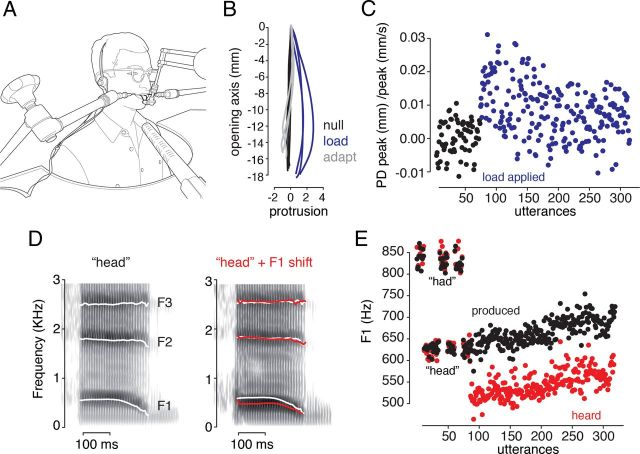Figure 1.
Experimental methods. A, Illustration of a subject in the experimental setup. Custom-made dental appliances attached the lower jaw to a small robot and the upper jaw to two articulating arms that held the head motionless. Subjects wore headphones and spoke into a microphone. B, The robot applied a load that displaced the jaw outward (blue vs black lines) during the downward movement associated with the word “head.” With practice, subjects compensated for this somatosensory perturbation (gray lines). C, Adaptation to the somatosensory perturbation was quantified using the perpendicular deviation (PD) of the jaw at peak velocity (peak) divided by peak velocity. The robot caused a significant increase in deviation (blue vs black points) that was decreased over the course of training. D, First formant (F1), second formant (F2), and third formant (F3) frequencies for a male speaker saying the utterance “head.” The first formant frequency of the vowel sound was shifted downward in real time (right, red lines vs white) altering auditory feedback. E, Subjects compensated for a decrease in the F1 frequency of what they heard (red points) by increasing the F1 frequency of what they produced (black points).

